What is BCM for Healthcare?
BCM for Healthcare (Hospitals, Day Surgery/Treatment, Clinics) involves conducting an exhaustive review of all potentially Disruptive Events; selecting the most realistic and probable, and making comprehensive, detailed plans, and testing them to ensure the physical facility and all related services complementing the Medical Objectives remain operational.
In hospitals , particularly those with Emergency Rooms/Accident and Emergency Facilities, and Day Surgery/Treatment Facilities take great “efforts” to ensure the Medical/Clinical Specialist’s services are prepared to render medical treatment in response to an external natural or man-made disaster.
Too often, ensuring the integrity of the physical facility, support services and systems are overlooked, given their outward looking perspective. Only when Senior Clinician recognize the need to keep their physical facilities and inter-dependent services functioning, in order to satisfy their clinical mission are the benefits of BCM truly understood and appreciated.
As part of the ISO standard ISO22301 for BCM, there is a need to "Understand the Organisation." This is an example of meeting the ISO requirement. A Hospital Facility must consider the following:
- Allied Health Services (e.g., Imaging, Laboratories, Pharmacies, Therapy Services)
- Operational Support Services (e.g., Patients Transport, Material Management, Inventory, Logistic, Information Services, Document Management, Financial, and Manpower Systems) must also kept operational to support the Clinical activities;
- Facility Support Systems (Dietary, Housekeeping, Emergency Power, Engineering , Mortuary, and Security) need to be sustained at the highest operational levels possible.
Only when all the various services and systems are kept operational, or can be recovered in a short period of time can the primary medical service mission be achieved.
Adopting BCM Practices in Healthcare Industry
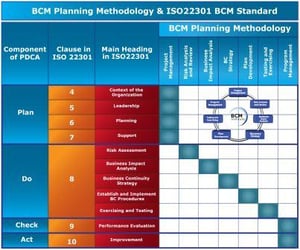 As more and more Healthcare facilities adopt Business Continuity Management or BCM practices, it is becoming the defacto standard of “best practice”, so there is a growing need to adopt the principles by Healthcare Facility Management Teams to satisfy their periodic due diligence reviews, ensuring the Board meets their governance responsibilities by providing a safe, ethical, and legally compliant environment.
As more and more Healthcare facilities adopt Business Continuity Management or BCM practices, it is becoming the defacto standard of “best practice”, so there is a growing need to adopt the principles by Healthcare Facility Management Teams to satisfy their periodic due diligence reviews, ensuring the Board meets their governance responsibilities by providing a safe, ethical, and legally compliant environment.
Healthcare BCM preparation shares most features and approaches common across all industries. The fundamental start with the adoption of the BCM planning methodology.
What is Unique in BCM for Healthcare Industry?
Allow me to briefly share seven, distinct consideration features that make BCM for Healthcare Facilities unique. While other companies may cater for one or more of the following unique features, most Hospitals and many Freestanding Healthcare facilities will cater for all.
(1) Redundancy
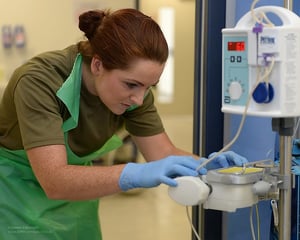 Is the practice of having multiple alternatives available, so in the event one critical component fails it does not become life threatening. Just imagine what might occur if patients are in the Operating Room, ICU, Dialysis and the primary electrical power source becomes unavailable for whatever reason. As a contingency, most Healthcare related facilities will have multiple power sources, typically electrical feeds from two separate power grids, and back-up generator(s) to power key medical power points and computer servers. During the “cutover” transition, Uninterrupted Power Source (UPS) will ensure power for critical medical equipment, and computer systems. Similarly, efforts are also made to have alternative food services providers prepared to meet needs of patients and staff from alternative locations.
Is the practice of having multiple alternatives available, so in the event one critical component fails it does not become life threatening. Just imagine what might occur if patients are in the Operating Room, ICU, Dialysis and the primary electrical power source becomes unavailable for whatever reason. As a contingency, most Healthcare related facilities will have multiple power sources, typically electrical feeds from two separate power grids, and back-up generator(s) to power key medical power points and computer servers. During the “cutover” transition, Uninterrupted Power Source (UPS) will ensure power for critical medical equipment, and computer systems. Similarly, efforts are also made to have alternative food services providers prepared to meet needs of patients and staff from alternative locations.
(2) Isolation Facilities
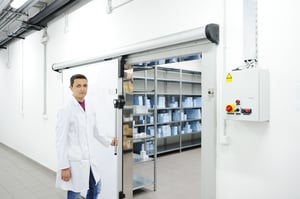 Healthcare facilities need to design features to provide isolation facilities, to decontaminate, and segregate individuals exposed to infectious diseases, chemicals, or radiological contamination. Separate clinics, treatment rooms, and patient rooms with positive/negative airflow, and physical isolation.
Healthcare facilities need to design features to provide isolation facilities, to decontaminate, and segregate individuals exposed to infectious diseases, chemicals, or radiological contamination. Separate clinics, treatment rooms, and patient rooms with positive/negative airflow, and physical isolation.
(3) Maintain Operations When Other Organizations Are Closed
By virtue of the services offered, most Healthcare Facilities plan to be open and accessible during times of crisis, e.g., natural disasters (fires, storms, floods etc.), or man-made (disease outbreaks, crashes, sabotage, utilities disrupted, IT “hacking” etc.). So, Medical/Clinical services, as well as all related, Nursing, Allied Health, Operations, Facility, and Administrative Support Services must be kept operational, at a certain level.
(4) Operational 24 x 7
 Related to above, during time of Disruptive Events, Healthcare Facilities are expected to be open, accessible, and operational, so manpower, medical supplies, equipment, food supplies and other services must be available. This could include accommodation and related services for staff.
Related to above, during time of Disruptive Events, Healthcare Facilities are expected to be open, accessible, and operational, so manpower, medical supplies, equipment, food supplies and other services must be available. This could include accommodation and related services for staff.
(5) Commitment From Staff To Work Under Adverse Conditions
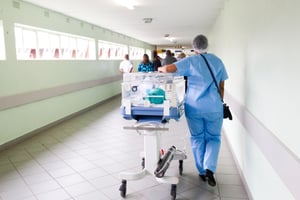
Healthcare staff are expected to be available, and at times, put in “harm’s way” during time of Disastrous Events, e.g. SARS, chemical leaks or explosions, secondary terrorist targets, hurricanes etc. when staff from other organizations are typically sent home or out of the danger zone for the duration, so plans may need to be designed accordingly.
(6) Networking for Support
 Most BCM Certified Healthcare Facilities make special efforts to develop support networks with other local Healthcare Facilities, including “Competitors” to give support as required, whether for services, manpower, equipment, sharing of supplies/consumables, pharmaceuticals, etc. Most Departments will develop contingency plans to ensure they can continue to provide services completely, or partially operational during and after a Disruptive Event.
Most BCM Certified Healthcare Facilities make special efforts to develop support networks with other local Healthcare Facilities, including “Competitors” to give support as required, whether for services, manpower, equipment, sharing of supplies/consumables, pharmaceuticals, etc. Most Departments will develop contingency plans to ensure they can continue to provide services completely, or partially operational during and after a Disruptive Event.
(7) Stabilize and Transfer
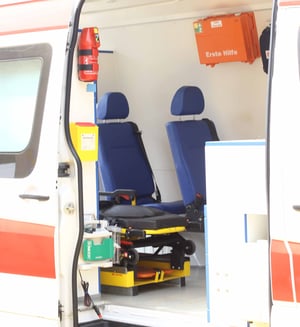
Even during a Disruptive Event, most Healthcare Facilities will strive to maintain a small contingent of staff to offer emergency services, stabilize patients, and then transfer the patients to the nearest facility with capability to manage the patient.
Seriously consider the justification for having a proper BCM implemented, and particularly focus on the unique requirement. Remember, the plans should be tested, and ready before a disastrous event occurs, lest you create another disaster!
To learn more about how you could upgrade your healthcare BCM competency, register for your place at BCM Institute's upcoming BCM for healthcare course, do speak to sales.ap@bcm-institute.org to learn more.
If you are keen in attending an advanced level course specially for Healthcare practitioners addressing BCM implementation and development facilitated by me (Steve Sobak) and Dr Goh Moh Heng, "Register Now" to find out more about the content of the course and the location that it will be held.



